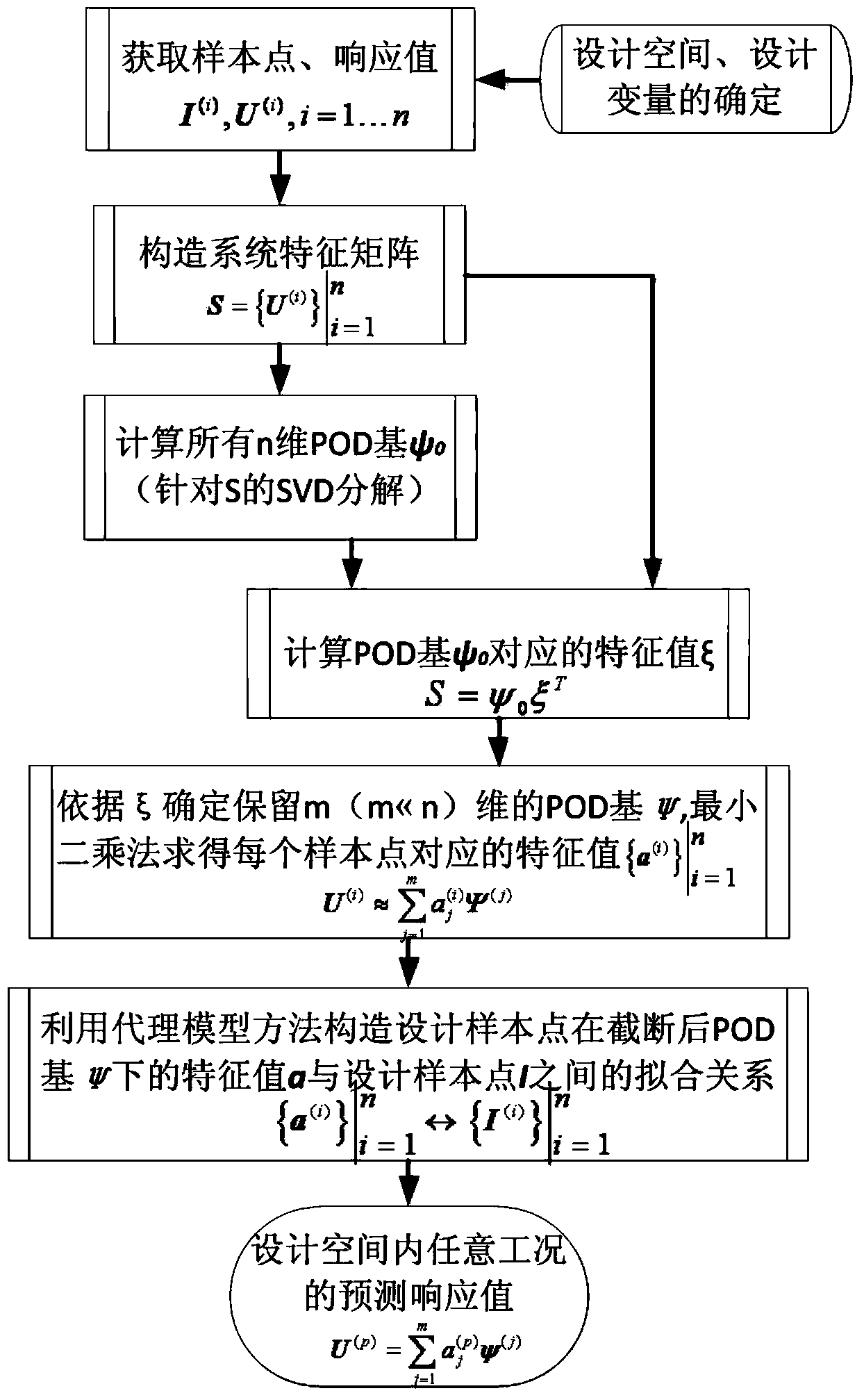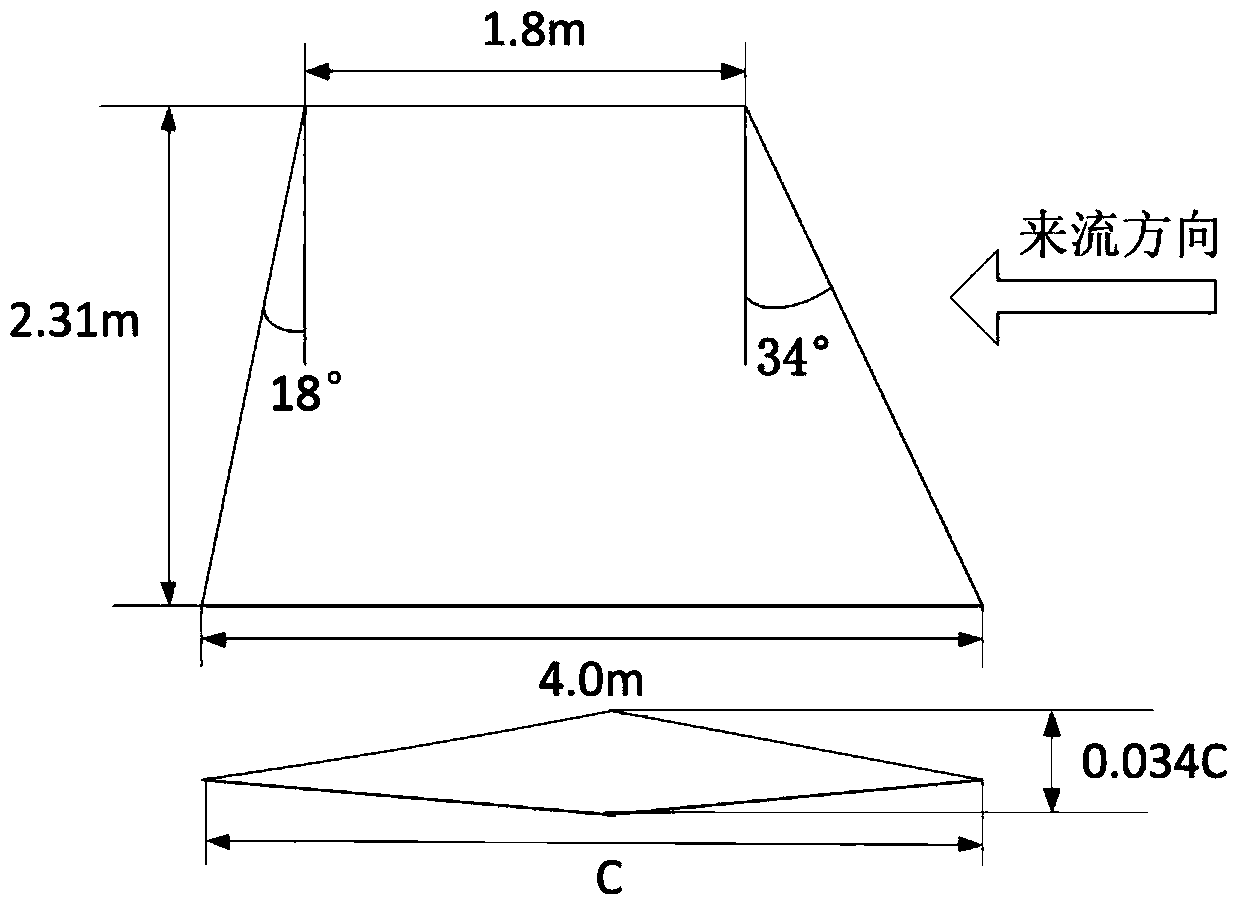POD (proper orthogonal decomposition) and surrogate model based order reduction method for hypersonic aerodynamic thermal models
A hypersonic and surrogate model technology, applied in the aerospace field, can solve problems that cannot be well adapted to engineering applications, achieve the effects of shortening the design cycle, improving design efficiency, and broad application prospects
- Summary
- Abstract
- Description
- Claims
- Application Information
AI Technical Summary
Problems solved by technology
Method used
Image
Examples
Embodiment Construction
[0031] Take the wing of a typical F104 fighter commonly used in aerothermoelastic analysis (see the geometric model of the wing structure in figure 2 , the computational fluid grid model of the wing see image 3 As an example, the CFD-FASTRAN solver is used to calculate the temperature distribution of the airfoil, and the POD-Surrogate method of the present invention is used to construct the reduced-order model of the aerodynamic heat of the airfoil, and the efficiency and accuracy of the method are further analyzed.
[0032] Step 1: Selection of physical model. Hypersonic vehicles mostly use slender bodies, lifting bodies or waveriders, and aerothermoelastic analysis pays more attention to the dynamic and static stability of wings or rudder surfaces. The present invention takes the wing of a typical F104 fighter commonly used in aerodynamic thermoelastic analysis as an example, and the relevant geometric parameters are as follows: figure 2 shown.
[0033] Step 2: Determi...
PUM
 Login to View More
Login to View More Abstract
Description
Claims
Application Information
 Login to View More
Login to View More - R&D
- Intellectual Property
- Life Sciences
- Materials
- Tech Scout
- Unparalleled Data Quality
- Higher Quality Content
- 60% Fewer Hallucinations
Browse by: Latest US Patents, China's latest patents, Technical Efficacy Thesaurus, Application Domain, Technology Topic, Popular Technical Reports.
© 2025 PatSnap. All rights reserved.Legal|Privacy policy|Modern Slavery Act Transparency Statement|Sitemap|About US| Contact US: help@patsnap.com



